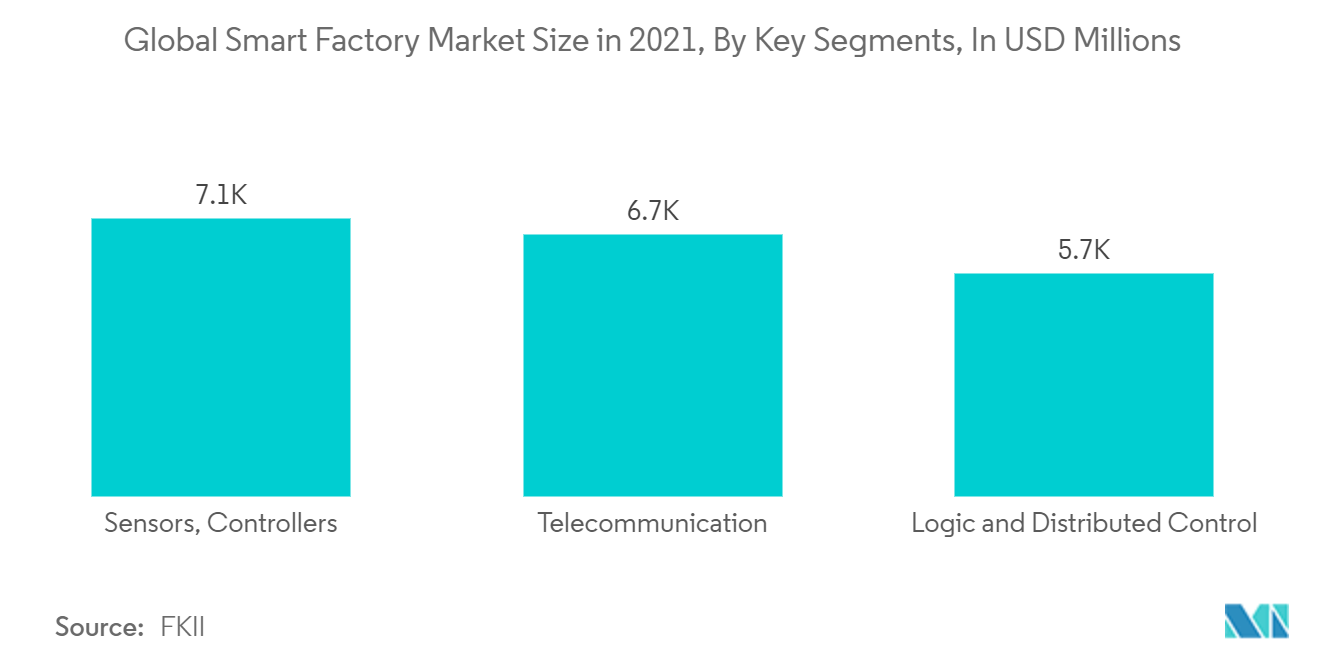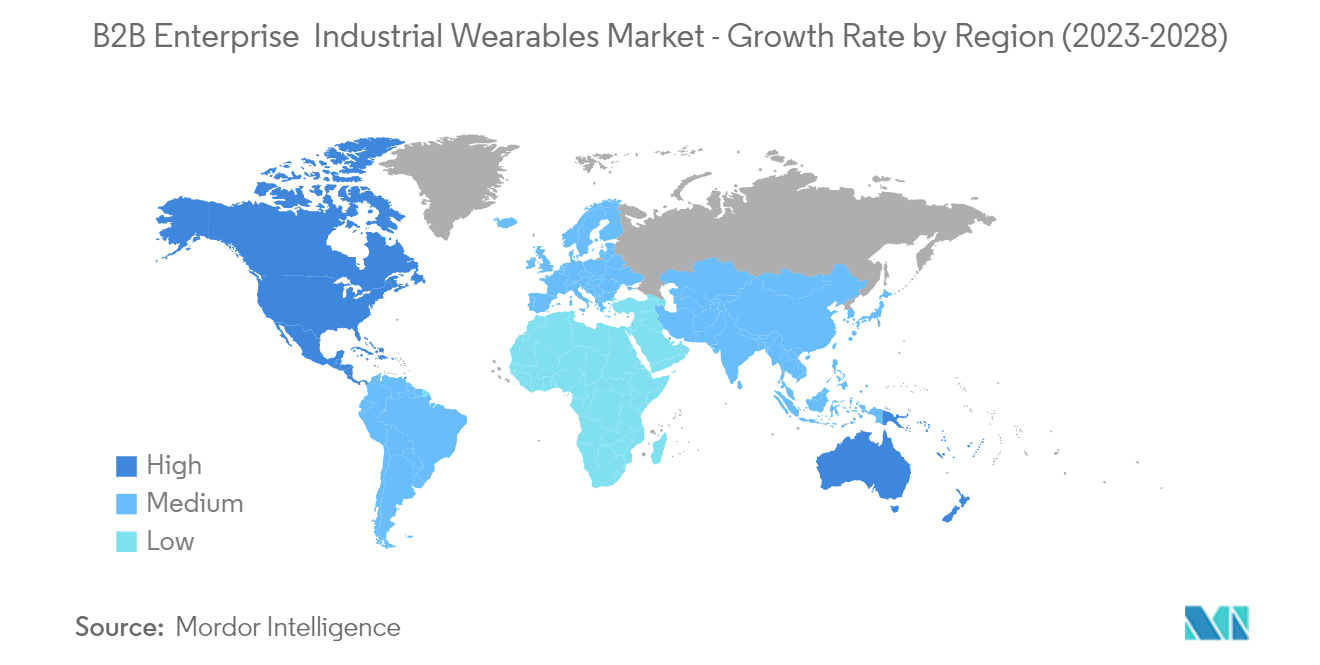Market Trends of B2B Enterprise & Industrial Wearables Industry
Demand for Smart Factory Setups are Expected to Aid Growth of Wearables
- Industrial wearables are being increasingly used due to the steady decline in component costs and improvements in functionality driven by learnings from the consumer sector. Industrial wearables increase efficiency, improve safety, shorten communication loops, accelerate onboarding and training processes, and enable remote experts to discuss technical issues.
- Unfortunately, training is very hands-off by nature, especially in the manufacturing sector. This is because inexperience can lead to severe equipment damage, injuries, or poor performance. Employers can leverage wearable technology to make this age-old process modern and efficient. General Motors, for instance, leveraged Google Glass, an augmented reality glass, to provide a unique, improved training process for its employees.
- According to the International Labor Organization, every 15 seconds, 151 workers have a work-related accident. ILO further divulged that yearly, at least 317 million workers have non-fatal occupational accidents worldwide. With wearable and embedded sensors, workers can be tracked to prevent injury from falls, heavy machinery, or overexertion. In the future, manufacturing units are expected to leverage the rise of IoT and connected machinery to make workplaces safer. Smart glasses with Augmented Reality (AR) are expected to be the next big thing in manufacturing facilities.
- IBM is working with North Star BlueScope Steel, a global building and construction industry steel producer, to develop a cognitive platform to ensure employees stay safer at workplaces. The system uses IBM Watson IoT for wearable safety technology. The technology, a part of the IBM Employee Wellness and Safety Solution, gathers data from sensors embedded in helmets and wristbands and analyzes it to alert employees and their managers in real time.
- Wearable devices for hands-free instructions and communication is a straightforward, practical application of the technology. For instance, oil, gas, and automotive workers often need to give complicated, documented instructions. Since there is no audit trail for these kinds of education, with paper, it is not easy to know whether instructions have been followed correctly or not. The software product that Intoware now has, WorkfloPlus, allows employees to use apps on different devices (wearables, smartphones, tablets, etc.) to provide reliable information to show that a process has been followed properly.

North America is Expected to hold the Major Market Share for B2B and Industrial Wearables
- North America is expected to hold the largest market share for B2B & Industrial Wearables because of the adoption of the technology, penetration of the internet, and government expenditure on research leading to the development of technology for high-end applications like the military.
- North America has the presence of prominent market players who offer wearable devices at a low price, making them affordable for customers. Many international players get their wearable devices manufactured and assembled by local manufacturers based in the region and then brand their names. The US and Canada account for the high adoption rate of consumer electronics. For instance, in the United States, BMW has been using smart glasses for inspection checking and quality assurance of its cars. The company's pilot allowed inspectors to take data through photos and videos to document potential deviations in production quality, allowing BMW to get rid of paper-based quality assurance checks, making the reviews efficient, and providing more contextual information related to the statements.
- Wearable device manufacturers continuously innovate their wearable devices to attain a competitive advantage. Several manufacturers have integrated NFC technology into their wearable devices to enable payment functionalities. Also, the improved standard of living has led to a growing demand for wearable devices in this region.
- According to CISCO, in the United States, there are expected to be 327 million total Internet users (94% of the population) by 2023, up from 307 million (92% of the population) in 2022. 32% of all networked devices are expected to be mobile-connected by the end of 2022, which drives the demand for the Wearables Market.
- The future of military combat is expected to be high-tech as scientists use the Internet of Things for combat gear integrated with biometric wearables to help soldiers identify the enemy, perform better in battle, and access devices and weapons systems using edge computing. The United States Army Research Lab recently awarded USD 25 million to the Alliance for the Internet of Battlefield Things Research on Evolving Intelligent Goal-driven Networks (IoBT REIGN) to develop new predictive battlefield analytics. The US Govt remains one of the largest investors and consumers of such technology leading to the proliferation of technology in the region.

